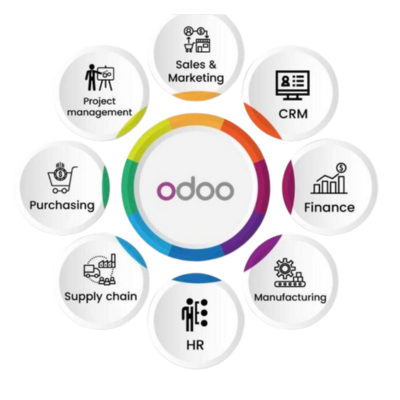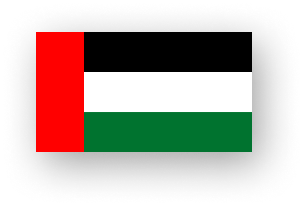The journey of discrete manufacturing is layered with specific requirements: detailed production planning, inventory control, efficient workflows, and real-time insights. Odoo, an all-in-one ERP solution, is perfectly suited to streamline and optimize these processes. Here’s an in-depth, professional guide to setting up Odoo for discrete manufacturing, structured for easy readability and impeccable organization.

1. Understand Discrete Manufacturing and Odoo’s Role
- Discrete Manufacturing focuses on creating individual products like machinery, equipment, and consumer goods.
- Key Requirement: Managing production as a sequence of distinct steps, from component procurement to assembly and final testing.
- Odoo’s Advantages for Discrete Manufacturing:
- Comprehensive Manufacturing Management Module
- Inventory Control for raw materials and finished goods
- Integrated Quality Checks for maintaining high production standards
- Real-time Reporting & Analytics
Also Read: Enhancing Customer Retention for Dealerships with Odoo CRM
2. Pre-Configuration Essentials
- Analyze Business Requirements: Identify which modules are critical for your workflow (e.g., Inventory, Sales, Purchase).
- Data Preparation: Gather details on raw materials, suppliers, BOMs (Bill of Materials), product routings, and workforce data.
- User Roles Definition: Define roles within Odoo (e.g., Production Manager, Quality Inspector) for efficient access management.
- Select Odoo Hosting Option: Decide between on-premise or cloud-based setups based on operational needs and IT infrastructure.
3. Installing the Required Modules
- Manufacturing Module: The core of discrete manufacturing, enabling work orders, quality checks, and scheduling.
- Inventory Module: Essential for stock management, procurement tracking, and lead time planning.
- Quality Control Module: For configuring quality checks at different stages.
- Maintenance Module: Ensures machinery and equipment are operating at peak performance.
4. Configuring the Manufacturing Process

- Setup Bill of Materials (BOMs):
- Navigate to Manufacturing > Bill of Materials.
- Define BOM types based on multi-level assemblies.
- Include details for each component, unit of measure, and quantities.
- Stat: Studies show that companies using optimized BOMs report up to 30% improvement in production efficiency.
- Define Routings and Work Centers:
- In Manufacturing > Operations, create routings to specify step-by-step production.
- Configure Work Centers for machines or assembly lines.
- Define Cycle Time and efficiency for each workstation to ensure accurate scheduling.
- Highlight: Efficient work center configuration minimizes idle time and boosts productivity.
Also Read: Automating Online Store Management Using Odoo E-Commerce Module
5. Managing Inventory and Stock
- Setup Inventory Locations: Define locations for raw materials, WIP (Work In Progress), and finished goods.
- Inventory Reordering Rules:
- Establish minimum stock levels for each component.
- Set up automatic reordering to avoid stockouts.
- Establish minimum stock levels for each component.
- Warehouse and Bin Configuration:
- Use bin locations for finer control over stock placement within the warehouse.
- Use bin locations for finer control over stock placement within the warehouse.
- Highlight: Inventory control using Odoo can reduce wastage by up to 25% with automated alerts and reordering triggers.
6. Integrating Quality Checks
- Quality Control Points: Set checkpoints in the workflow for each critical stage (e.g., assembly, packaging).
- Inspection Types:
- Define test types like visual inspection, dimension check, or functionality test.
- Link each test to the relevant work order to ensure quality adherence.
- Define test types like visual inspection, dimension check, or functionality test.
- Quality Alert Management: Enable automatic alerts if quality issues arise.
- Stat: Companies implementing rigorous quality checks report up to 40% reduction in product recalls and rework.
7. Scheduling Production and Resource Allocation
- Plan Production Orders:
- Define production frequency, batch sizes, and lead times.
- Use the MRP Scheduler to forecast material and production needs.
- Define production frequency, batch sizes, and lead times.
- Allocate Resources Based on Demand:
- Assign workforce, machines, and materials to different shifts based on demand.
- Prioritize orders by due date and customer priority.
- Assign workforce, machines, and materials to different shifts based on demand.
- Highlight: Efficient scheduling can increase on-time delivery rates by up to 20%.
8. Implementing Real-Time Reporting and Analytics

- Dashboard Setup: Tailor Odoo’s dashboard for real-time monitoring of KPIs like production yield, downtime, and cycle time.
- Production Reports: Generate reports on production cost, time efficiency, and resource utilization.
- Highlight: Access to analytics can help manufacturers cut costs by 10-15% through informed decision-making.
9. Fine-Tuning with Advanced Features
- Capacity Planning: Leverage Odoo’s Capacity Planning tool to predict bottlenecks and adjust production schedules.
- Demand Forecasting: Integrate Demand Forecasting for accurate procurement and stock control.
- Automation: Enable automated workflows to reduce manual tasks, such as automated work order generation when stock is low.
- Highlight: Advanced planning tools can significantly optimize production cycles, reducing lead time by 15-20%.
10. Testing and Going Live
- Pilot Run: Run a test production cycle to identify any system bottlenecks or configuration issues.
- User Training: Train staff on module functionalities, especially for real-time data entry and quality checks.
- Launch Full Operations: After successful pilot testing, transition to live operations for a fully integrated, discrete manufacturing workflow.
- Post-Implementation Review: Regularly audit Odoo configurations to ensure they align with evolving manufacturing needs.
Expert Odoo ERP Solutions Provider
Hire Expert Odoo Developers for Tailored ERP Solutions Today!

Conclusion
Setting up Odoo for discrete manufacturing is a transformative step, bringing precision, efficiency, and control to production workflows. This guide has walked through the detailed process of configuring essential modules, from inventory and quality control to advanced scheduling and analytics. Proper setup and regular fine-tuning can position discrete manufacturing companies to achieve competitive advantages in cost, quality, and delivery time.
Also Read:
FAQs
What is discrete manufacturing in Odoo?
Discrete manufacturing in Odoo refers to the production of distinct items that are easily counted, such as machinery, electronics, or consumer goods. The process involves individual, countable units of production, and Odoo’s features help manage the entire production workflow efficiently.
How do I set up Odoo for discrete manufacturing?
To set up Odoo for discrete manufacturing, you need to configure the Manufacturing module, create Bills of Materials (BoMs), set up work centers, define routing, and establish production schedules. This setup ensures that your production process is automated and well-managed.
What are the key features to focus on for discrete manufacturing in Odoo?
Key features include:
- Bills of Materials (BoM) to define the components required for each product.
- Work Centers to manage resources for production.
- Production Orders to track manufacturing progress.
- Inventory Management to ensure raw material and finished goods tracking.
- Routing to manage the flow of production tasks and operations.
Can Odoo handle multiple production lines in discrete manufacturing?
Yes, Odoo can handle multiple production lines by allowing you to set up various work centers, each with its own specialized tasks. You can then assign specific operations to different work centers to optimize efficiency.
How do I manage product variants in discrete manufacturing with Odoo?
Odoo allows you to set up Product Variants for items with different attributes (like size, color, etc.). You can create different BoMs for each variant, ensuring that each product is manufactured according to its specific requirements.















